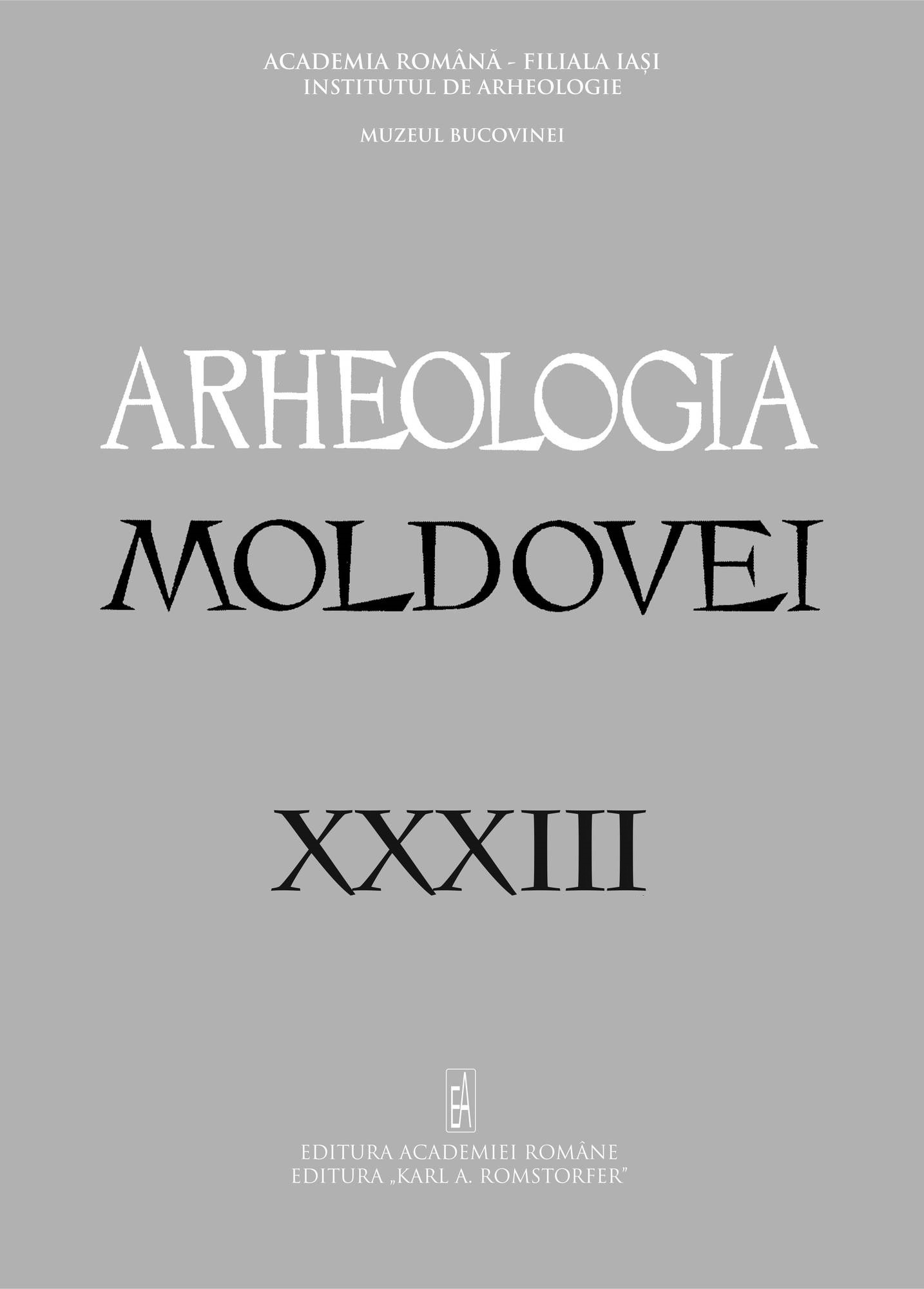
We kindly inform you that, as long as the subject affiliation of our 300.000+ articles is in progress, you might get unsufficient or no results on your third level or second level search. In this case, please broaden your search criteria.

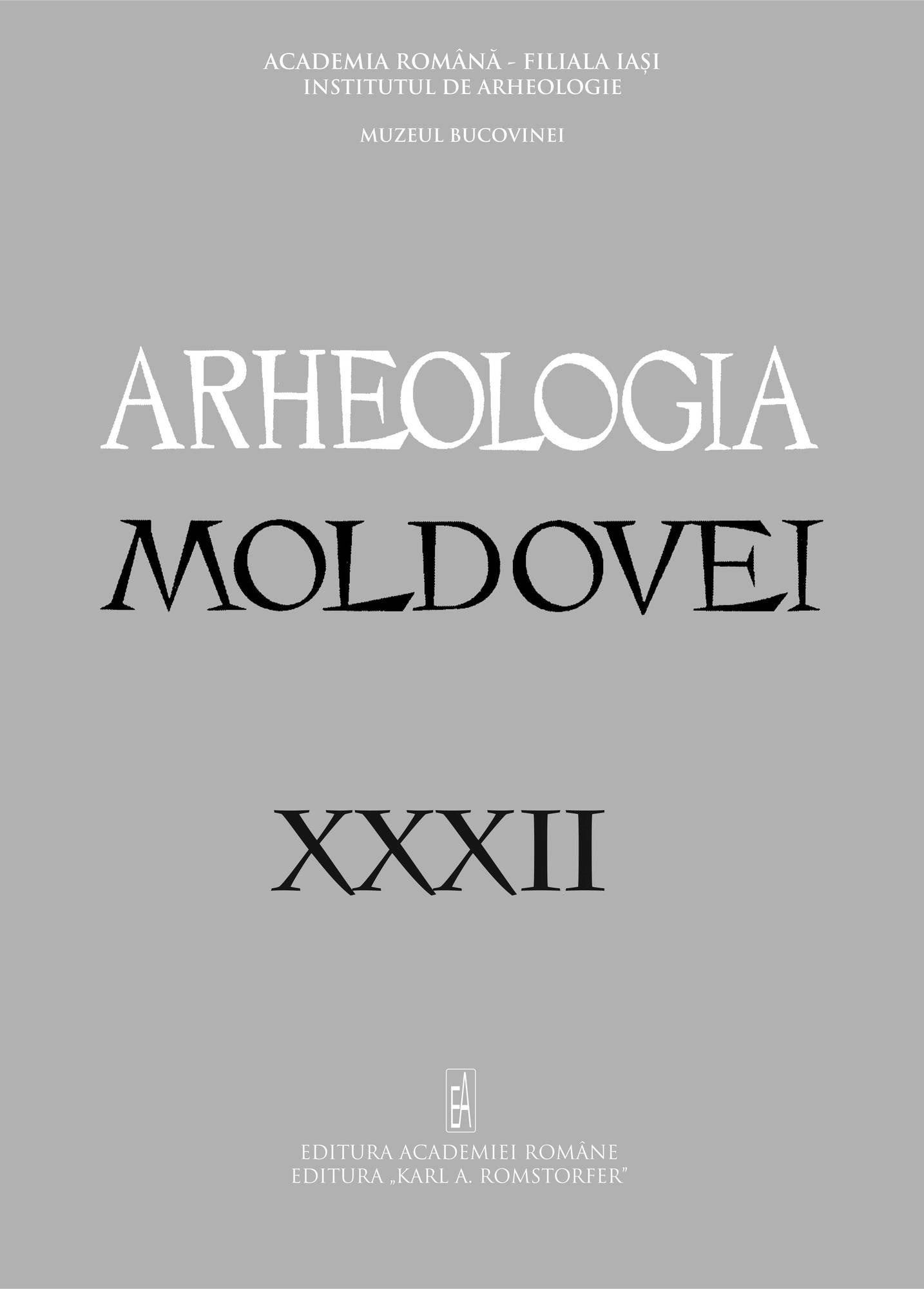

The article discusses unique 7th century materials from the Turkic mausoleum in Bayannuur sum of the Bulgan aimag of Mongolia. The sculptural images belong to one of the Tiele (Tokuz-Oghuz) tribes that were part of the Tang Empire. They are currently stored in the Kharkhorin museum. 11 equestrian figures were studied. A safety assessment of the ceramic microplastics is given. The riders’ clothes elements are revealed, a characteristic of the anthropological appearance of the prototype statuettes is given. A separate description of the horses is also offered. It has been determined that a number of images have traditional musical instruments in their hands, which are also used in the funerary rite. Image prototypes are undoubtedly Mongoloid and most likely belonged to the Turanid race. Ceramic microplastics demonstrate the authentic appearance of the ancient Turks of Mongolia and expand the range of sources on the anthropology of medieval Inner Asia.
More...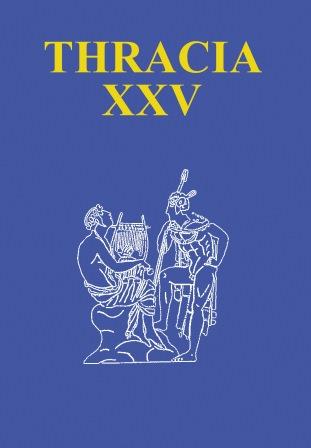
In the dedications of the temple of the Pontic Mother of the Gods (4th century BC – 4th century) in Dionysopolis (now the town of Balchik) on Bulgarian Northern Black Sea Coast the goddesses‘ references are Pontic Mother of the Gods, Pontic Mother, Pontic Goddess Mother, Mother of the Gods. In other inscriptions from the Black Sea region is used Mother of the Gods (Bizone, Istros/Histria, Tomis, Olbia), Pantikapaion – Phrygian Mother, Mesambria – Kybele Mother, Marcianopolis – Heavenly Mother of the Gods. The concept of Pontic is found in inscriptions for Aphrodite from Histria and Olbia, from Tiristasis, Kyzikos/Cyzicus and the island of Kos, where it is a protector of sailors. Obviously, in the case of the Pontic goddess of the Temple of Dionysopolis, it is a protector from and into the sea. It is certain that behind the term Pontic lies the meaning of the sea, and this characteristic as the Sea Mother of the Gods, according to the use of forms of the Ionic dialect, probably originates in Asia Minor. In the traditional culture of the town of Sozopol (ancient poleis Apollonia Pontica) and in the others towns of Bulgarian Southern Black Sea coast, the Sea Mother (Greek Kiratalassa = mistress, lady soveraign, ruler of the sea) is the Goddess of the Sea. Its strength and power is so great that it can both break the sea and the worst storm to make it subsided. To express their esteem to her, fishermen portray her as a bust of a female figure made of wood. It is placed at the front of the boat’s nose to protect them in the sea. The comparability of the deities of the Sea Mother of the Gods from Antiquity in Dionysopolis (now town of Balchik) on Bulgarian Northern Black Sea Coast and the Sea Mother of the Twentieth Century in the town of Sozopol on Bulgarian Southern Black Sea Coast – allows for the problem situation to come up with a working hypothesis that would say it is for the Great Goddess Mother as a Thracian-Anatolian Deity, honored in Thracian environment in Hellenic poleis on the Thracian coasts.
More...
The Thracian megalith sanctuary Kara kaya is located in the Western Rhodopes Mountains. It occupies a dominant peak over the surrounding terrain, ending with a natural stone pyramid. The rock cuttings are concentrated on the top of the slopes and at the foot, near the Visteritsa river. This structure, combined with the semantics of the rock cuts, make it a classic symbol of the cosmic mountain.
More...
The article examines the depiction of the two female trumpet players from the Kazanlak tomb’s fresco and focuses on the instruments themselves. Fol discusses the parallels in estimated size, conical bore shape and funeral rite purposes between the Kazanlak tomb’s trumpets and the Egyptian pharaoh Tutankamun’s trumpets. The author uses physical and experimental evidence from ancient and folk trumpets to support her theory for existence of detachable mouthpieces carved from organic materials in ancient trumpets. She deduces the possible make-up and sound of the Kazanlak tomb trumpets from the recordings of Tutankamun’s trumpets, and from evidence presented in the fresco. She strengthens her 2009 hypothesis about a just-intonation based Thracian mode.
More...
The Roman castellum Abritus, located during archaeological excavations in the 1950s and 1960s, about 2 km east of the modern town of Razgrad, Bulgaria, is among the military camps of auxiliary troops whose main role is to preserve peace in the area between Danube river and the Balkan Mountains, as well as to counteract the barbaric offensives originating from the northern lands of the Lower Danube limes. Due to the fact that it housed ancillary military units, as well as archaeological evidence of the remains of buildings and the other unclear architectural components in the immediate vicinity, suggest the presence of official and private epigraphic monuments. The inscriptions published so far are not limited to the territory of the Hisarlak area, but also to the villages near Razgrad. Some texts have been discussed many times before, but the revision gives them the opportunity to draw a more complete insight of Roman provincial society. The examples clearly show the Romanization process in the Lower Moesia lands on a smaller scale, which is emerging in and around the territory of Abritus. The Roman army appears to be the primary factor for the penetration of Roman influence in these lands. The erected inscriptions from Abritus, which mention veterans, Roman citizens, and migrants in the canabae of the castellum, testify to the gradual absorption of lands east of the Yantra River by a population that succeeded through its entry into the army. Abritus land is a vast territory that provides sufficient livelihoods through cultivation. This is also one of the factors that contribute to the economic uplift of the population, whether local or veterans. This is confirmed by the epigraphic material in the castellum and the surrounding area, which is characterized by good workmanship and rich decorative elements. It is obviously a population of a high standard and expressing its economic presence through the socalled “epigraphic habit”.
More...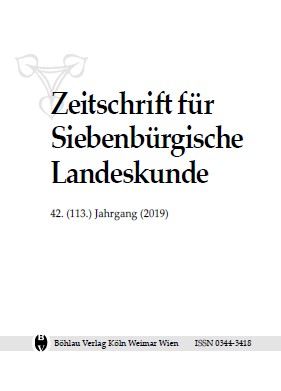
Die evangelische Stadtpfarrkirche in Kronstadt, nach einem verheerenden Brand im Jahre 1689 vor allem als Schwarze Kirche bekannt, ist eine der bedeutendsten Kirchen Siebenbürgens. Die Marienkirche, vor der Reformation als Pfarrkirche für die katholische Gemeinde der Kronstädter Sachsen erbaut, war zu jener Zeit – und ist, so scheint es, immer noch – das größte gotische Bauwerk östlich von Wien. Der Bezug des beeindruckenden Gotteshauses zu bedeutenden europäischen Bauvorhaben betrifft nicht nur die gotische Formensprache, sondern vielleicht auch einen ganz konkreten handwerklichen Beitrag. Ihre wie auch immer geartete Bauhütte arbeitete seit den letzten Jahrzehnten des 14. Jahrhunderts fast durchgehend über einen Zeitraum von einem Jahrhundert vor Ort und brachte ein für seine Zeit modernes Bauwerk hervor, bei dem sowohl Chor als auch Langhaus je drei gleich hohe Schiffe besaßen. Diese Bauform, als Hallenkirche bekannt, war in Siebenbürgen im Aufkommen begriffen; als erster ausgeführter Bau dieser Art gilt der Chor der Mühlbacher Kirche. Doch nur in Kronstadt war es gelungen, das Bauprinzip der Hallenkirche sowohl bei den Kirchenschiffen als auch beim Chor anzuwenden, weswegen das Bauwerk als Hauptvertreter der siebenbürgischen Spätgotik betrachtet wird (Abb. 1).
More...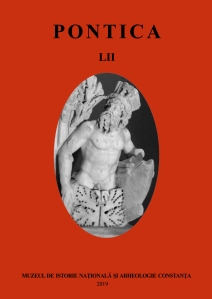
The article aims to continue an old approach by which we aim to identi fyand publish from the collection of the Sibiu museum of isolated discoveries and treasures that come from Dobrudja for sure or with a certain probability. In the collection of the Bruckenthal National Museum in Sibiu there is a batch of 28 siliquas, belonging to the old numismatic collection. This information suggests that the treasure reached the museum's collection through a donation made before 1948. More precisely, even before the First World War. The analysis of this treasure or fragment of treasure starts from the beginning from the lack of certainty of its discovery in the Istro-Pontic province. Just as,perhaps, we could hypothetically speak of a treasure returned to Dobrogea, which could have been discovered somewhere near the limes or in one of its fortifications. The money paid to the army facilitated the trade nearby the frontier. A number of 18 pieces belong to Constantius II, of which 12 are issued in Constantinople, 3 in Nicomedia, 2 in Sirmium and one still unassigned. All these specimens are of the VOTIS/XXX/MVLTIS/XXXXtype and belong to the years 355-361 AD. Three siliquas belong to Iulianus. One(VOT/X/MVLT/XX type) is issued in Constantinople (reduced, dated in the first half of363 AD), another (VICTORIA-DD NN AVG type) in Lugdunum (in 360-361 AD) and the last one (VOTIS/V/MVLTIS/X type) in Arelate (or Constantia) in 360-361 AD. The currency for Valentinian I (4 pieces) are issued in Constantinople (3 of the VOT/V,VOTIS/XXX/MVLTIS/XXXX, VOT/V/MVLT/X type, from 364-367 and 368-373 AD) and Nicomedia (one piece of VOT/V/MVLTIS/X type, from 367-373 AD). The three siliquas issued for Valens in Lugdunum (Restitutor Reipublicae type from 365-367 AD),in Aquileia (VOTIS/X/MVLTIS/XX type from 375-377 AD) and in Antiochia(VOT/XX/MVLT/XXX type from 375-378 AD). In Barbaricum we know that in the4th century AD. such discoveries appear mainly in the cultural space Sântana de Mure ș-Cerneahov, being associated with the Gothic ethnic presence.
More...
The author presents some aspects of the circulation of the Byzantinecurrency in Dobrogea in the 10th-11th centuries and analyzes the impact that the invasionsand raids of migrants had on the state of the provincial economy. The period is subdividedinto two parts: A.896 - 1001; B.1001 - 1092, each with specific features.A. 78 points with isolated monetary discoveries and a number of 13 coin hoards /monetary deposits were reviewed. The epoch is characterized by the resumption of thepenetration of the Byzantine currency on the Lower Danube and the development of an island-type monetary circulation, around important urban centers: Pliska and Preslav -,on the Danube - Silistra and Isaccea, and on the coast - Constanța, Mangalia, Balchik. Armed clashes also bring payments in precious metal either as stipends or as a result ofrobberies.B. At the beginning of the century the monetary circulation is generalized on thewhole territory of the province with some syncopes caused by the Pecheneg invasions from the years 1027, 1034, 1036. For this period of time, a number of 155 points with isolated discoveries and a number of 48 coin hoards / monetary deposits were inventoried. Only after the great Pecheneg invasion in 1046-1048 will the southern part of the province beseverely affected by the settlement of migrants. The raids of the Ouz, "the revolt of the Paristrian cities" or the battles of Alexius I with the Pechenegs, in the area of Silistra,will reduce the monetary circulation in the province, that will acquire an insular character, around the fortified cities - Silistra, Isaccea, Nufăru.
More...
L’objet de ce catalogue est double : en premier lieu, il s’agit de présenter lesgrands étapes de l’exploration archéologique à Sozopol, tout en permettant aupublic de découvrir à travers elles la vie quotidienne de la cité. Pour ce faire, le catalogue, tout comme l’exposition, est divisé en 5 grandes sections qui suiventun cheminement logique depuis le coeur de la ville – le sanctuaire d’Apollon leMédecin sur l’île de St. Cyriaque - jusqu’aux marges de son territoire en explorant l’espace urbain, les nécropoles et les tertres funéraires aristocratiques, offrant ainsi l’occasion de découvrir à travers ces diverses thématiques l’univers fémininet masculin, l’enfance, la religion, la vie culturelle, l’architecture monumentale ou domestique, les activités économiques, les rites funéraires, l’exploitation agricoledu territoire ou celle des mines de cuivre… L’ouvrage commence par une introduction présentant le sujet de l’exposition et s’achève sur une brève présentation de la trajectoire d’Apollonia du Pont entre les guerres de Mithridateet la conquête de Lucullus qui apporte ici un terminus chronologique.
More...
Vi sono alcune fonti tardoantiche esasperanti per gli studiosi in quanto se neconoscono pochissimi elementi sicuri: un esempio famoso ne è L’Historia Augusta.Nella stessa categoria si iscrive anche la raccolta di microbiografie nota con iltitolo Les hommes illustres de la ville de Rome. Paul Marius Martin, il curatore dellarecente edizione pubblicata presso Les Belles Lettres nella Collection desUniversités de France e sulla quale ci soffermeremo in seguito, spiega che „presquetout est obscur dans celui-ci: la date exacte de sa rédaction, son véritable titre, son auteur, sa composition même” (p. IX) (si veda anche p. X: „Le titre De uirisillustribus Vrbis Romae n’est certainement pas le titre original, non plus que lestitres de chapitres qu’on trouve dans certains manuscrits”). Di conseguenza, laprovocazione è stata enorme, ma – dobbiamo dirlo sin dall’inizio – l’editore l’hafronteggiata con successo. Con acribia, con spirito analitico, con ampia visione,con ottima conoscenza delle fonti, Martin ha fatto il meglio per offrire le soluzioni più convincenti alle qustioni sollevate da questa fonte tardo-latina.
More...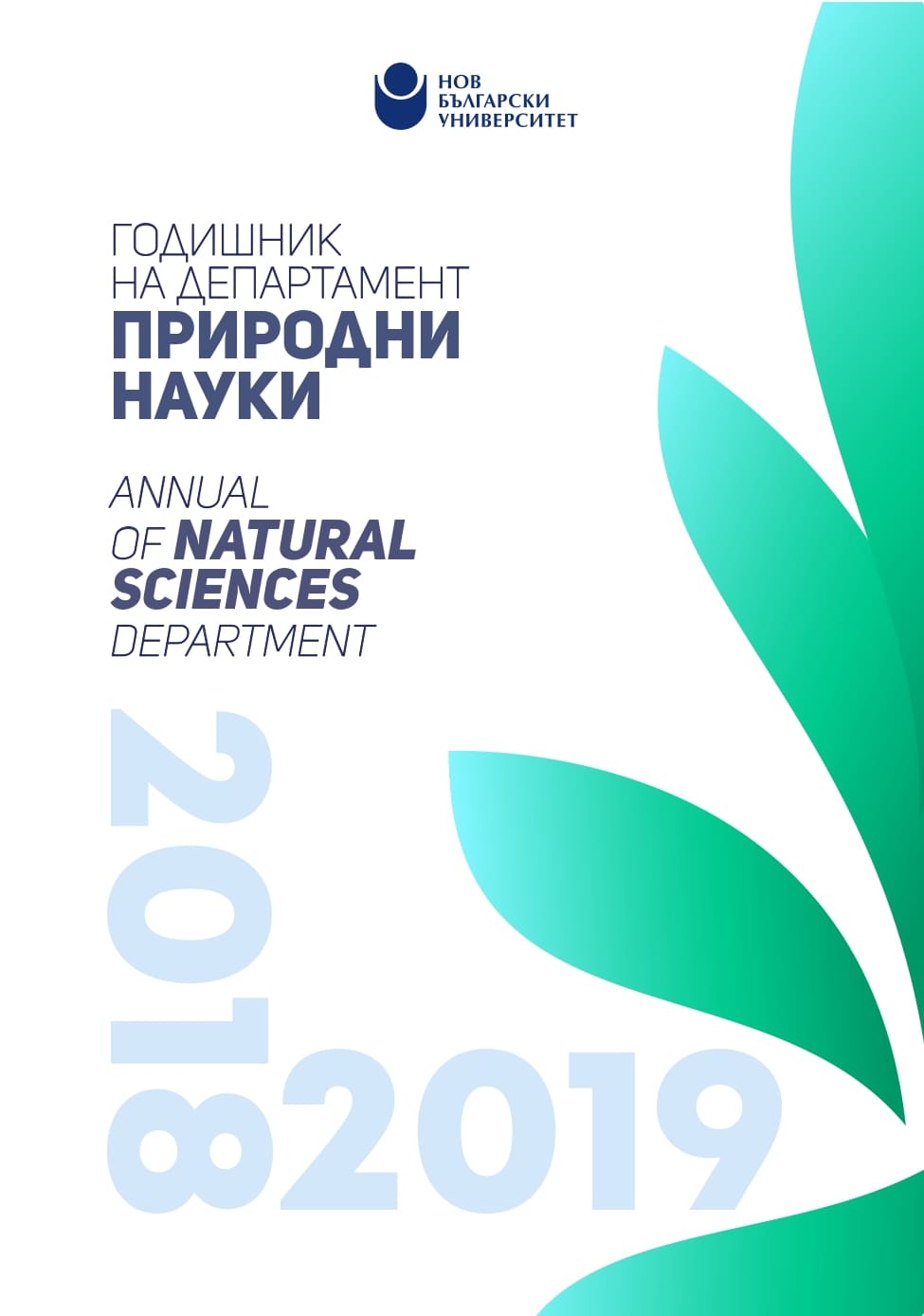
The aim of the work is to present the interdisciplinary projects developed and funded by the Bulgarian Science Research Found. These projects are created in Departments of Archaeology, and Natural Sciences, New Bulgarian University in the period 2014–2019.
More...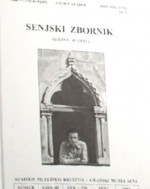
In the article are presented the brief results of many years of archaeological research into and around the Church of St. Peter in Starigrad Paklenica. It is particularly highlighted that Prof.Ante Glavičić also dealt with this sacral structure. Early Mediaeval and Late Mediaeval phases of the church have been confirmed. To date 215 graves have been explored with finds (especially jewellery) from the early Middle Ages to the 19th century. It was emphasised that the church and bell tower are entirely preserved.
More...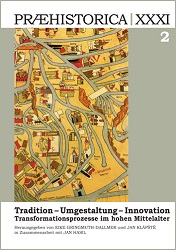
The separation of the original core of the town of Opava, founded between 1213 and 1220, into plots was adapted to the communication scheme of the earlier settlement. Within the development of the town in the second half of the 13th century, regularly measured-out blocks of houses were built in the southern part of the town. Archeologically, the development of the land subdivision and buildings may be observed by means of the finds of fences and sunken basements of wood-and-clay buildings, which dominated among the buildings of the early town. Around the turn of the 14th century, we encounter the earliest known evidence of stone chambers (‘Steinwerk’), built at the place or earlier basements of wood-and-clay buildings, which were in the course of the 15th and 16th centuries integrated into the new stone buildings covering the entire width of the plots all to way to the street line. It is also characteristic for the period of the 13th and 14th centuries that the terrain in the area of the plots as well as in public spaces was significantly raised, which was mainly caused by the deposition of soil from the construction pits for house basements and waste disposal in their immediate vicinity. From the second half of the 13th century, the sanitary situation of the town was improved by the gradual spread of wooden-constructed waste pits, whereas medieval wells have been recorded only sporadically.
More...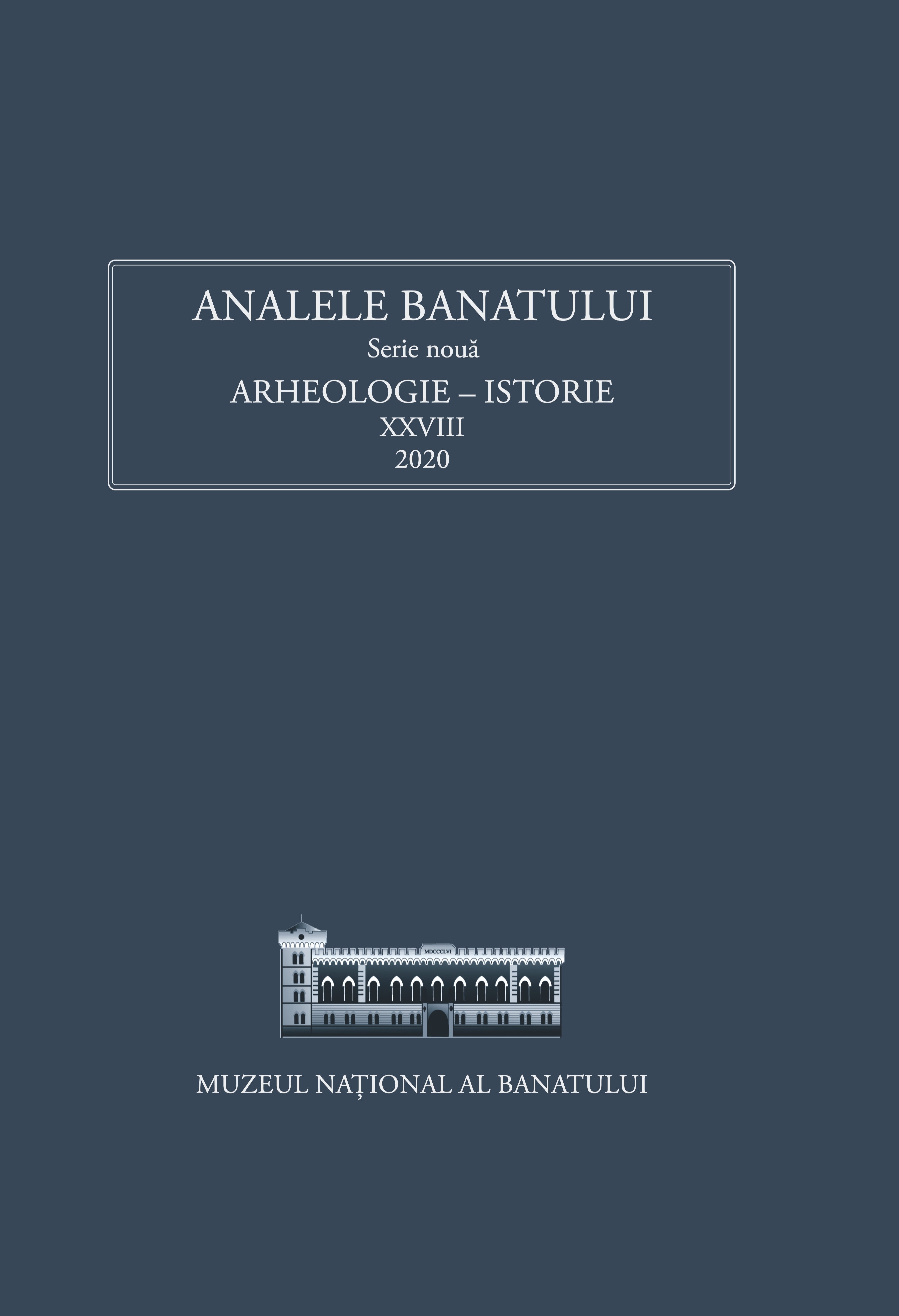
Mindszenthy Antal (1786-1859?) was a Hungarian erudite who travelled across Europe and Hungary, leaving behind a diary about his trip across the Hungarian Plane. The first part of his descriptions was published in 1831 and 1832, but due to the censorship of the period, the second part of his manuscript, the description of his trip from Titel to Pest, was not allowed to be printed. The diary of Mindszenthy is kept in the Széchenyi National Library from Budapest, Hungary and was entirely published recently by the Katona József Museum from Kecskemét. Due to the fact that the travel route included regions of Banat that are to be found today within the borders of Romania, one of the stops being the center of the region, namely Timișoara, we thought it would be of great interest to publish the description of the city, both in Hungarian language and translated into Romanian. Timișoara has underwent several reconstructions through the centuries (and it witnessed three major sieges in 1551/1552, 1718 and 1849), consequently the major part of it’s architectural heritage dates from the end of the 19th century, but especialy from the beginning of the following century. Such narrations from eye whitnesses are very scarce in the first part of the 19th century, a period when illustrations are as well extremely rare. A local priest, Nicolae Stoica de Hațeg has written his chronicle about the region of Banat a few years after Mindszenthy, between 1825-1827. Apparently for both of them the work of Francesco Griselini stood as a modell. The original text has been adnoted with comments and interpretations of the authors in order to establish the veridicity of the descriptions and to provide further information regarding the subject of the account. Since the diary did not included any illustration, for a better understanding we completed it with several images representing either the city plan or buildings, mainly dating from the 19th century or earlier, trying to illustrate the descriptions as faithfully as possible.The text also offered the authors the opportunity to discuss about some historical relics it refers to: an ottoman inscription that was inaccurately translated until now, the Horros Kapi (Rooster or later Forforosa Gate) of the Ottoman fortification of Timișoara and a presumably medieval flag kept in the artillery warehouse.
More...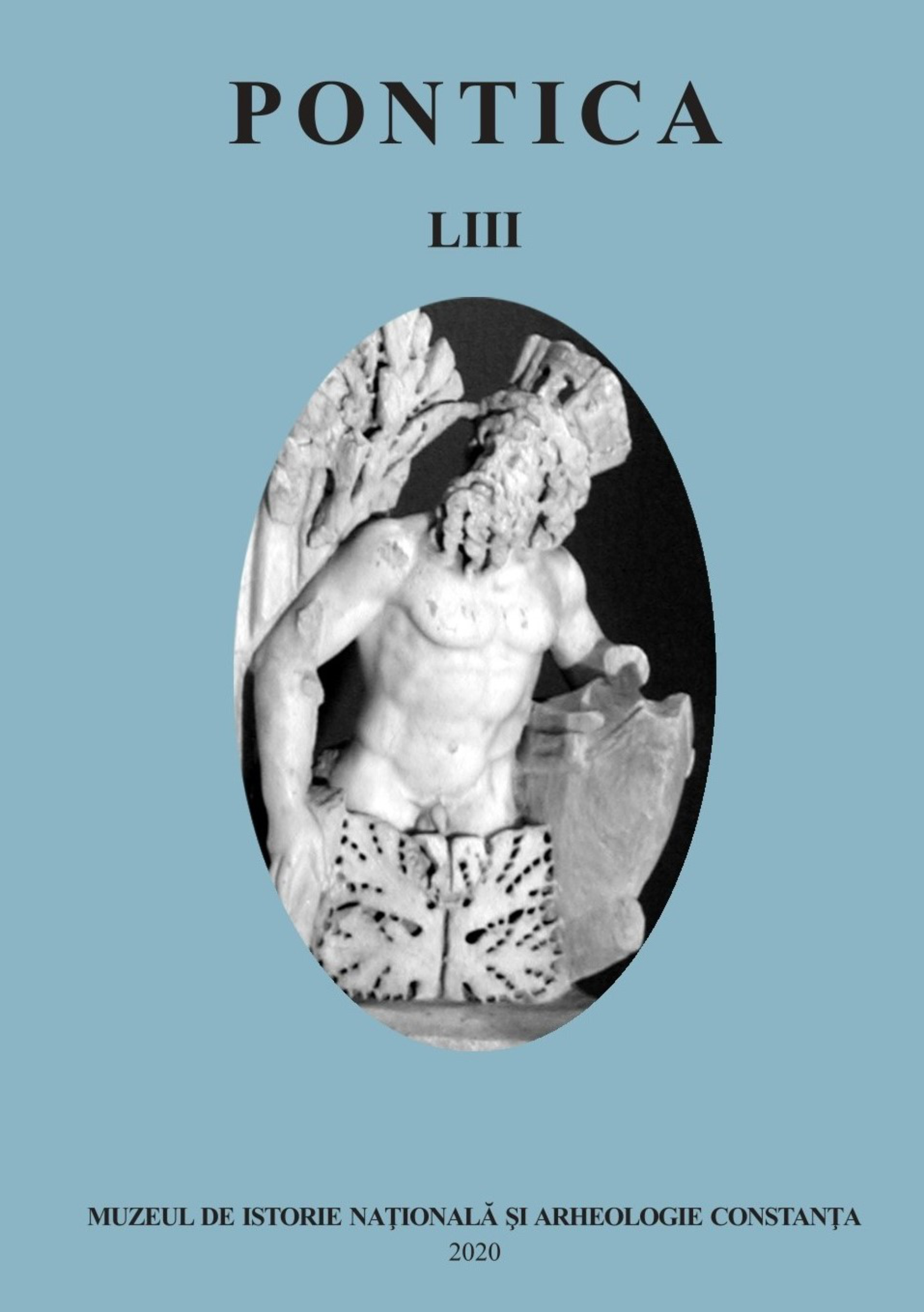
The informations about the stamps discovered in Tyras were therefore partial and outdated. This work in Russian is therefore welcome, since it publishes nearly 900 stamps found between 1998 and 2008, without selection of production centers and relying on the chronologies usually used. After a few pages on the history, especially the economic one of Tyras, the authors present general considerations on amphoric trade from the catalog which constitutes the most most important of the book.
More...
In 2019, the third appeared in the prestigious Mega publishing house in Cluj-Napocavolume from the series Bibliographia classica orae septentrionalis Ponti Euxini (abbreviatedBCOSPE) having as fields of reference Ars, res sacrae & mythologica. Volume,with Victor Cojocaru as author and Lavinia Grumeza as contributors, Lucian Munteanu, Annamária-Izabella Pázsint, Dan Ruscu and Ligia Ruscu, aappeared as the ninth volume of the Pontica et Mediterranea series.
More...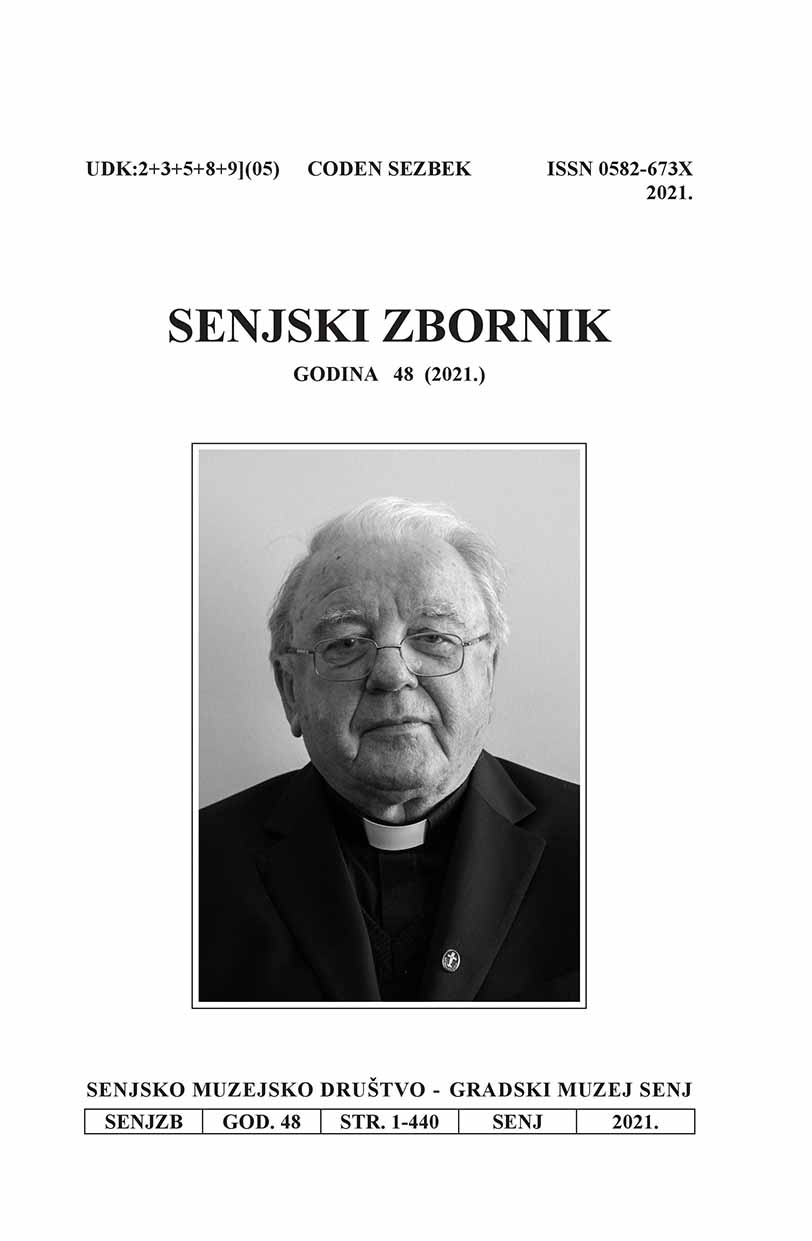
Senj’s heritage in general is historically and artistically extremely poorly researched and interpreted in the wider context of the heritage of the Eastern Adriatic coast. This is especially true of the monuments of the Middle Ages, hidden under completely different later architectural layers in the Early Modern Age of the militarised town. The examples analysed here are hypothetically interpreted in a new way, with suggestions for the dating and stylistic connections from the region of Kvarner, as well as from the wider Adriatic area. Along with the emphasis on the historical circumstances and the analysis of graphic and written sources, a proposal is presented for the dating and stylistic connection of the destroyed mediaeval tower (in the old Croatian Chakavian dialect - turan) in front of the façade of Senj’s cathedral. The possible closest twin and model to the Senj tower is probably located in Krk - insufficient data about the appearance of the Senj tower requires some speculation. All the circumstances that support such an interpretation, in the stylistic and chronological connection of the former Romanesque bell tower of the Krk cathedral from the end of the 12th century and the bell tower in front of Senj’s cathedral are explained exhaustively. It is assumed that, like the Krk bell tower, this one in Senj also had a communal status, so this may have been the reason for the construction of one more bell tower behind the rear of the cathedral, connected to the whole of the bishop of Senj’s historical residence. After this, two chronologically and epigraphically-palaeographically close inscriptions are compared with two churches from the first half of the 14th century, one which according to A. Glavičić was located on the site of the sacristy of Senj’s cathedral and the other which was located on the site of the sacristy of the Krk cathedral. The epigraphically palaeographically very close inscriptions, Senj’s "Imie od Raduča" and Krk’s which mentions the donors "Leonard" and "Bogdan", as well as the master craftsman "Mikel", are dated just four years apart. Finally, there is a comparative discussion about the process of urbanisation, architecture and the possible original name of Senj’s Mala Placa, the probable centre of the secular communal life of Senj in the late Middle Ages and the second focal point of the then already bicentrically organised town. Also discussed are the implications arising from the existence of such an urban focal point located next to the quay and completely separated from the most important public space in front of the cathedral. A proposal is presented for the dating of the town Loggia (the socalled "Kampuzija") to the 14th century. The term is interpreted as the name of the Loggia (Loža), but also as the name of the whole area regulated early as a square, in the sense of "campo" - like Krk’s Kamplin. The explicit Venetian method of the shaping of the brick-built Loggia, fitted with characteristic ground floor columns and Gothic monophores on the first floor part of the façade, stands out. One’s attention is drawn to its basement storage area which may have been a storeroom for salt. In this way, an early Venetian contribution (14th century) to the urbanisation of this part of the town located in the immediate vicinity of the quay stands out. For the Daničić house fitted with a luxurious late Gothic triforium, it is assumed that in the late Middle Ages it could have been a town hall and that it could, in fact, have been the town hall whose beauty was praised by J. W.Valvasor. A hypothesis is made about its original dimensions. With a little research luck, this could be confirmed by the conservation-restoration research of the inner face of the house’s masonry, especially the floors at the level of the skilfully carved Late Gothic triforium. The triforium is attributed to the work of Andrija Aleši from the 1550s.
More...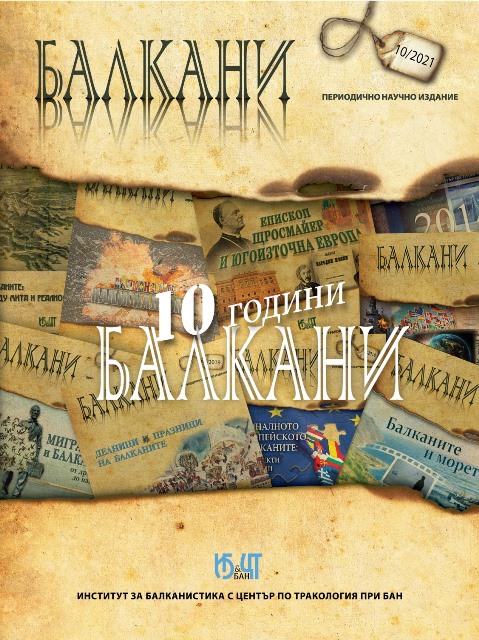
The paper outlines the path of research on the Thracian Antiquity from the first studies in the first half of the 18th century until Thracology became an autonomous academic domain. The most important publications and academic forums illustrating its emergence from the shadow of Ancient Greece and Rome are indicated, as well as the most important achievements in the research on the ancient Thracian lands in the context of Southeastern Europe and the new perspectives that would lead to reinterpretation not only of finds and sites, but also of the overall socio-economic life, foreign policy and economic relations. The political history of the Thracian kingdoms is usually examined from the viewpoint of military and political clashes. The stereotype of opposing Greeks and Thracians was gradually surmounted, which led to the elaboration of the expressed idea on the ancient Thracian lands as contact zone of economic, cultural and trade interactions.
More...